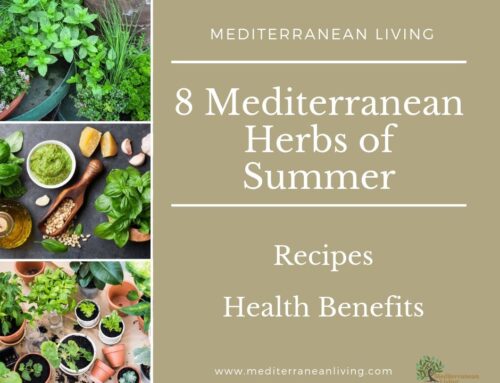Read Before You Weed: Healthy & Delicious Dandelions
By Christine Kenneally
Updated October 21, 2021
Read Before You Weed: Dandelions may be the healthiest plant in your garden
Spring is in full swing, and that means dandelions are popping up all over the place. This is good news, as dandelion is an incredible plant with a host of medicinal and culinary uses. It is the main ingredient in many of my favorite Mediterranean diet recipes. Plus, it adds a beautiful splash of yellow to the landscape. The name “dandelion” is translated from the French “tooth of the lion”, which is inspired by the pointed and serrated shapes of the leaves.
If you think of dandelion as a weed, think twice: dandelion (leaf and root) is chock full of minerals and vitamins and is also a very beneficial plant for your garden. It adds minerals and nitrogen to the soil, and also attracts pollinating insects. Still not convinced? Read on:
The medicinal benefits of dandelion (tarxacum officinale) are almost as prolific as the plant itself! Here are just some of the many uses of this plant:
It is a Diuretic.
Many of us experience water retention at some point or another. Whether it’s due to PMS, a diet high in salt, hot weather, or something more serious, such as problems with the heart, liver or kidneys, it’s always important to talk to your doctor about the cause and the appropriate solution for you. Diuretics promote the elimination of excess water in the body through urination. Many diuretics are problematic in that they flush too many minerals out of our system, leaving us depleted, which can worsen some conditions. Dandelion, however, is a uniquely wonderful diuretic because it happens to be high in minerals, especially potassium. Some symptoms of water retention that dandelion can help with are: acne, sciatica, constipation, diarrhea, and intestinal bloating and gas.
It is a Hepatic, or “Liver Aid”.
Our livers are constantly working hard to eliminate toxins from our body. This includes toxins from our environment as well as from the foods we eat. The liver processes fats, oils, sugars and alcohol. Depending upon on our diet, the liver can get bogged down. Dandelion helps to tone and strengthen the tissues of the liver and support it in doing its job.
It is a digestive stimulant.
Dandelion, both the root and leaf, has a bitter flavor. The mainstream American diet has worked hard to mask bitter flavors to make food more palatable (for example, we add sugar to EVERYTHING). As it turns out, bitter foods are very important for our digestion. Just tasting the bitter flavor on our tongue triggers the secretion of hydrochloric acid in the stomach, and stimulates the liver and gall bladder to release bile. This gets the whole digestive system going. It’s important to note that adding sweeteners to your bitter foods will take away the digestive benefits, so it’s good to embrace the bitter as it is! Bitters also help us to metabolize sugars, which balances blood sugar levels and can even help curb our sweet cravings. We could all use some help controlling our sweet tooth from time to time!
It is an Alterative, or Blood Cleanser. (read: DETOX)
After a winter of eating heavier comfort foods, we often feel sluggish. It just so happens that spring is the perfect time to detoxify our system. The first plants to spring up (dandelions are among the very first) are highly detoxifying, which coincides with our bodies waking up from a long winter nap! Our bodies mimic what happens in nature at this time of year: snow melts, water starts to flow, and accumulated sediment washes away. This happens in our blood as we eat light, bitter, cooling and anti-inflammatory foods, which promote digestion and the elimination of toxins, and our system gets purified.
How to use Dandelion
There are many ways you can use both the leaves and roots of dandelion. One approach is to use the leaves in a culinary way and use the root in a medicinal way.
Raw dandelion leaves make an excellent addition to a salad, or you can sauté them in olive oil with a whole host of other delicious ingredients
Try this recipe for Dandelion with Cannellini, Potatoes & Roasted Red Peppers.
Dandelion root can also be used straight from the ground. Wash the dirt off first! In a fresh state, it makes a great tea: chop the root into small pieces and place in a jar or teapot, pour in boiling water and let steep for 15 minutes. Strain and enjoy.
Here are instructions on making a Dandelion Decoction.
If you’d like to extend the life of your dandelion root, you can dry it. Chop it up, place it on a screen or in a basket, and hang in a warm, dry place for about a week until it’s dry. At this point, you can either roast it for a smoky flavor, or use it as is. It should be stored in airtight containers. Once the root is dried, the pieces are very hard and a different process should be followed to make a tea, also known in this case as a decoction. Place the dried roots in a pot, pour cold water over them and heat slowly to a boil. Cover and simmer for 15-20 minutes, strain and enjoy. For both teas and decoctions, the general recommended ratio is 1 tablespoon of chopped root per cup of water.
Sources:
Brittany Nickerson, Thyme Herbal, Amherst, MA
“The Complete Illustrated Holistic Herbal” David Hoffmann, Element Books, Inc. 1996
“Herbal Recipes for Vibrant Health” Rosemary Gladstar, Storey Publishing, 2008
“Herbal Remedies for Women” Amanda McQuade Crawford, Prima Publishing, 1997
Photo of dandelion courtesy of Conservation Watcher.












Mrs. C says:
Delphine says:
Lola says: